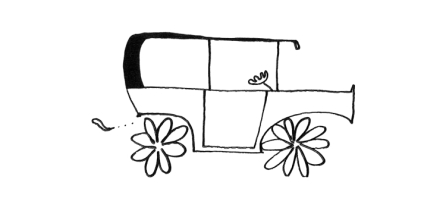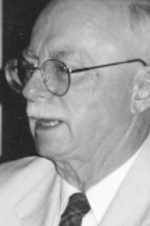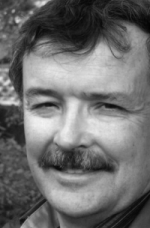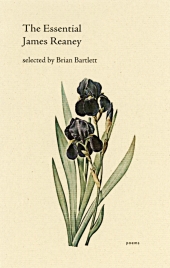The Porcupine's Quill
Celebrating forty years on the Main Street
of Erin Village, Wellington County
BOOKS IN PRINT
The Essential James Reaney by James Reaney and Brian Bartlett
Despite his amply deserved reputation as the father of Southwestern Ontario Gothic, James Reaney was one of the most playful and buoyant Canadian poets publishing in the 1940s and ’50s. The Essential James Reaney presents an affordable, pocket-sized selection of the poet’s very best work.


2010—ForeWord Magazine Book of the Year,
Shortlisted

2010—ReLit Award,
Long-listed

2010—Poetry Daily,
Commended
Table of contents
‘Poems 1945-49’ in Poems (1972)
The Antiquary
A Prayer
The Gramophone
Antichrist as a Child
The Red Heart (1949)
Dark Lagoon
The Chough
The Plum Tree
The Sundogs
The Katzenjammer Kids
Klaxon
Lake Superior
‘Poems 1951-60’ in Poems (1972)
The Ghost
The Baby
The Windyard
Doomsday, or the Red Headed Woodpecker
A Suit of Nettles (1958)
Invocation to the Muse of Satire
From January
From June
From August
From October
‘Poems 1960-65’ in Poems (1972)
Near Tobermory, Ontario
The Alphabet
Twelve Letters to a Small Town (1962)
The Bicycle
Shakespearean Gardens
To The Avon River above Stratford, Ontario
From The Dance of Death at London, Ontario (1963)
Performance Poems (1990)
From A City in Greenland
From Footnotes & Podiatry
Souwesto Home (2005)
The Fan
The Duck
‘White Grumphies, white snow’
Don Quixot de la Verismo
Elderberry Cottage
From Brush Strokes Decorating a Fan
Review quote
‘Few would disagree, if pressed, that the word ‘essential’ is overused. That’s not the case with this book. The essence of James Reaney’s poetic works has been more than adequately distilled in this slim volume. Both the preface and the afterword allude to the fact that Reaney’s literary and artistic accomplishments encompassed several areas: poetry, of course; but also, plays, short stories, and novels. In his later career, he was, in fact, more recognized for his playwriting than his poetry. Nevertheless, the poems in this book, selected by Brian Bartlett, demonstrate a singular strength and vision that, but for the lack of a wider readership, almost certainly would have earned him a place as a widely known and respected 20th Century Canadian poet.
‘Subtly experimental and formally inventive, Reaney was a master at subverting simple and complex rhyme schemes and bending them to his poetic will, making a sort of conservative magic out of his subject matter. He also employed myth, and sometimes simple comic absurdity, to offset the bleak landscapes, figurative and literal, of the lives of the characters in his poems. He could be as bleak as Auden on his worst day; Auden’s clocktower addressing the lovers on the bridge has nothing on Reaney’s fetus’s macabre realization that its mother’s heart is the clock already ticking away its hours (‘‘Dark Lagoon’’). One can see Reaney’s forthrightness about cold eternal truths both softened and supported by his use of naturalistic themes; Frost would be proud, if a bit taken aback.
‘Some of the denser poems are the most rewarding: ‘‘Invocation to the Muse of Satire’’ is not as formally playful, but is nonetheless as emotionally rich as any of the other poems. See the aftermath of Satire invoked: ‘‘Has no one seen the country where your cure has nursed? / It is a land of upturned privies with occupants inside them / Crawling out through new tops like astonished moths / Bursting from their unusual, foul, and dark cocoons.’’
‘ ‘‘Reaney’s influence on Canadian poetry has not yet been recognized adequately,’’ writes Bartlett in the preface. Surely, this introduction to the poet’s oeuvre will go some way towards rectifying that. The distilled essence in this volume is powerfully heady stuff; one can take additional pleasure in the fact that Reaney’s book-length poem, A Suit of Nettles, is due to be published in early 2010 by The Porcupine’s Quill.’
—Dan Coffey, ForeWord Magazine
Description for reader
Reaney’s influence on Canadian poetry has not yet been recognized adequately. His humour and metaphorical leaps are echoed at times in the poetry of another long-time resident of Southwestern Ontario, Don McKay, not so coincidentally once a student of Reaney’s. His dictionary-ransacking word-play in a poem like ‘The Alphabet’ caught the attention of bpNichol, who once wrote that Reaney was ‘an explorer & an innovator ... obsessed with language as sound’.
Biographical note
At James Reaney’s funeral on June 14, 2008, his son’s tribute recalled his father as many things: poet, playwright, puppeteer, director, painter, historian, regionalist, scholar, student, wit, visionary, patriot, organic farmer, long-distance cyclist, shivaree-maker, dragon-slayer, and conversationalist (and that list is incomplete, giving less than half the terms used by Reaney’s son). In an energetic life that lasted almost eighty-two years, James Reaney had a major impact on the people and culture of southwestern Ontario, and that impact has been felt across Canada by those attuned to his poetry, his plays and his other achievements.
Born in 1926 on a farm near Stratford, Ontario, James (Jamie) Crerar Reaney was the only child of James Nesbitt Reaney and Elizabeth (née Crerar) Reaney. His mother’s ancestors were Highland Scots; his father’s were from Ulster. Once in Ontario, the families were variously Presbyterians, Plymouth Brethren, and Independent Gospel Hallers. Reaney’s father suffered from bouts of poor physical and mental health; years later, Reaney recalled how he ‘let me moon about the house, read books and practise music’. Reaney went to a one-room school in Elmhurst, Stratford Collegiate and Vocational Institute, and University College at the University of Toronto, achieving some freedom from his evangelical upbringing and receiving a B.A. in 1948, then an M.A. the following year. While in Toronto, he gained notoriety for his short story ‘The Box-Social’, in particular for its image of an aborted fetus. (Though as a student he published several stories in a rural or small-town Gothic vein, these wouldn’t be gathered into a book until 1996). Also in 1949, at the young age of 23, he won the first of his three Governor General’s Awards, for his first poetry collection, The Red Heart, and began to teach English at the University of Manitoba. Two years later he married Colleen Thibaudeau, a former classmate and another poet, who would go on to publish memorable, innovative poetry collections such as The Martha Landscapes and The Artemesia Book. Their two sons, James Stewart and John, were born in 1952 and ’54. During his eleven years based in Manitoba, Reaney took a leave of absence to do a Ph.D. back at the University of Toronto, completing a dissertation, ‘The Influence of Spenser on Yeats’. While in Toronto, he finished his satirical and lyrical tour-de-force A Suit of Nettles. His and Colleen’s daughter, Susan, was born in 1959, the year before the family moved back permanently to Ontario.
In the fall he started teaching at the University of Western Ontario -- where he remained until his retirement in 1989 -- Reaney published the first issue of his magazine Alphabet: A Semi-Annual Devoted to the Iconography of the Imagination. As an editor he published poets such as Jay Macpherson, Al Purdy, Milton Acorn, Margaret Atwood, and bpNichol. For its eleven-year duration, in its focus on the mythological aspects of literature, the magazine showed the powerful influence of Reaney’s teacher and mentor Northrop Frye. Through his teaching career Reaney was also dedicated to the culture and geography of his native region, devising courses such as ‘An ABC to Ontario Literature and Culture’. By the early 1960s Reaney was becoming recognized as a librettist (for Night-Blooming Cereus, a John Beckwith opera performed on the CBC in 1959) and a playwright, author of The Killdeer, One-Man Masque, and The Sun and the Moon. Tragedy struck the family in 1966 when Reaney’s son John died of meningitis at age 12.
Later in the decade and for the rest of his life, Reaney’s passion for theatre overshadowed his writing of poetry, resulting in many plays such as Colours in the Dark, Listen to the Wind and, most famously, The Donnellys, a non-linear, poetically charged trilogy inspired by a 19th-century Ontario Irish family killed by a hostile community. Reaney’s later theatrical creations and musical collaborations included two more projects with Beckwith: The Shivaree and -- including live action and eighteen five-foot-high puppets -- Crazy to Kill: A Detective Opera; the chamber opera Serinette, with music by Harry Somers; and a stage adaptation of Lewis Carroll’s Alice Through the Looking-Glass. He was a vital, beloved force in theatre workshops and drama productions. His later poetry collections were published in 1990 and 2005. A few months before Reaney’s death, the McMichael Canadian Art Collection in Kleinburg, Ontario, mounted a show called The Iconography of the Imagination, comprised of fifty landscapes, drawings and sketches that Reaney had completed during his creatively rich life.
Excerpt from book
The Bicycle
Halfway between childhood & manhood,
More than a hoop but never a car,
The bicycle talks gravel and rain pavement
On the highway where the dead frogs are.
Like sharkfish the cars blur by,
Filled with the two-backed beast
One dreams of, yet knows not the word for,
The accumulating sexual yeast.
Past the house where the bees winter,
I climb on the stairs of my pedals
To school murmuring irregular verbs
Past the lion with legs like a table’s.
Autumn blows the windfalls down
With a twilight horn of dead leaves.
I pick them up in the fence of November
And burs on my sweater sleeves.
Where a secret robin is wintering
By the lake in the fir grove dark
Through the fresh new snow we stumble
That Winter has whistled sharp.
The March wind blows my ruts over,
Puddles past, under red maple buds,
Over culvert of streaming, under
White clouds and beside bluebirds.
Fireflies tell their blinking player
Piano hesitant tales
Down at the bridge through the swamp
Where the ogre clips his rusty nails.
Between the highschool & the farmhouse
In the country and the town
It was a world of love and of feeling
Continually floating down
On a soul whose only knowledge
Was that everything was something,
This was like that, that was like this --
In short, everything was
The bicycle of which I sing.
Introduction or preface
One evening in the late 1940s, the poet Earle Birney went to a party and met an undergraduate over twenty years younger than himself. Much later he would recall that stranger: ‘ ... a small packet of firecrackers set alight, he went sizzling and leaping mischievously from one guest to another, an excited child popping adult questions, bounding into the kitchen and back to the hall, and continually exploding with ideas, images and emotions. I thought him a marvellously inventive Ariel, and still do.’ That young stranger, James Reaney, would soon win the Governor General’s Award in 1949 when he was only twenty-three years old, for his first collection of poems, The Red Heart. Much of the subsequent commentary on that book referred to its darkness, its glimpses of stunted childhoods and embittering communities, but Birney’s image of Reaney as Ariel is valuable, since the book is leavened with tonal lightness, delight in metaphor and odd detail, and spirited inventiveness. Despite his deserved reputation as the father of Southwestern Ontario Gothic, Reaney was one of the most playful and buoyant of Canadian poets publishing in the 1940s and ’50s. The mixture of disturbing grotesquery and entertaining whimsy in his poems is, I hope, amply embodied in the following selection.
The flexibility of Reaney’s poetry is shown in its range of voices. He has poems that address a dog, the Avon River, God, the Muse of Satire, downstairs furniture, and the to-be-resurrected dead; poems in the voices of Lake Superior, a lonely child on a farm, Death, a nasty ghost, and geese named Branwell and Lobo. His omnivorous imagination is also evident in its range of allusions and references, from Isaiah, Shakespeare, and Emily Bronté to the Katzenjammer Kids and Rin Tin Tin, from Egyptian hieroglyphics and Penelope’s fingers to the Orange Lodge, zeppelins, and Ernie’s Barber Salon. Reaney’s language itself often pushes back against the restraints and oppressions of a culture the poems satirize. His poems inhabit what a late work of his referred to as ‘a tavern called the Noun. / And a gymnasium called the Verb’. His diction is often built upon familiar and common words, but also dips into the likes of ‘sardonyx’, ‘chalcedony’, and ‘idlurious’, or comes up with coinings like ‘Godwanaland’, ‘heartsmith’, and ‘tricklerain’. Against the spectres of solitude and death, Reaney pits his lively rhythms and seductive sounds. ‘The Plum Tree’ evokes the plight of a farm boy trapped in loneliness and profound silence, where plums ‘are like blue pendulums / That thrum the gold-wired winds of summer. / In the opium-still noon they hang or fall, / The plump, ripe plums.’ Not only the plums’ Keatsian sensuousness but also the ‘um’s of those lines -- plum, pendulum, thrum, summer, opium, plump -- suggest a mantric life force beneath the grimness of the environment. A tension between the threat of morbidity and an expressive freedom is often felt in Reaney’s earlier poems.
In the first fifteen years or so of Reaney’s poem-making, death and childhood are pervasive -- not that these themes vanished after 1960: his sequence The Dance of Death at London, Ontario was published in 1963. Whether Reaney writes of a carrion bird called ‘Devouring Years’, or -- in ‘Dark Lagoon’, a masterly poem of prenatal fatedness -- of death prophesied for every infant, his poetry is shaded with the implacable course of mortality. Yet the poems are rarely lugubrious in tone; a madcap intelligence is never far away. Children appear often in the poems, nowhere more freshly or unusually than in ‘Antichrist as a Child’ (an early, less successful version of that poem was in the first person, spoken by the Antichrist himself); there the child seems perplexed and passive, a victim of compulsions he doesn’t understand rather than a manipulator or strategist. In other poems we find a ‘low IQ farmboy’ whose head is full of ‘Vast God and the interiors of tree trunks’, a baby who was ‘an old man one hour old’, and an adolescent cycling to school ‘murmuring irregular verbs’. Reaney’s attraction to childhood as a field for poetry is rooted in his youth as an only child in rural Ontario, the first breeding ground for his sense of both suffering and joy, providing what his later friend the musician John Beckwith called ‘a whole world of wonderful images coming out of that grain of sand that is the farm’ (spoken in Mark McCurdy’s documentary film James Reaney: Listening to the Wind).
If Reaney’s poems depict the stultifying effects of environment, they find in metaphor, symbolism and audacious imagination not only ways of expressing threats and terrors to human sanity and health but also the pleasures of poetry and other kinds of creativity. In the McCurdy film, Reaney says that his favourite course-evaluation comment among those he received for his teaching was ‘Dr Reaney exaggerates’ (‘I’m going to have that put on my tombstone’). In the film he also speaks of his homeland’s attitude to the mind-expanding exaggerations of myth: ‘The immediate response on the part of Southwestern Ontario is that ‘‘I don’t want to believe in anything before breakfast -- especially if it’s impossible.’’ ’ But ‘the impossible’ often serves as Reaney’s bread and butter. To him a record-player can be a ‘beastly bird’ on a bank by ‘the lake / At Gramophone’; Death tells a poet, ‘All your tropes and iambics / Become my leaden fiddlesticks’; and a huge fan appears in the sky, tremendous enough to ‘blow giants & battlefields like dead leaves away’. However, if fancifulness were all, Reaney’s inventions might wear on us and show the strains of too much cleverness. Instead, they co-exist with sharp social observations and views of community. ‘Klaxon’ is a comical poem about a town’s obsession with cars, which become personified in the poet’s imagination; and ‘Shakespearean Gardens’ is a multi-part prose-poem that finds Shakespearean parallels in Stratford, Ontario, in a thunderstorm, a lumber-yard accident, a school and a boarding house. Reaney’s A Suit of Nettles, a form-switching, book-length satire inspired by Renaissance poet Edmund Spenser’s Shepherd’s Calendar, takes on several targets (education, religion, literary criticism) within the fantasy of competing, loving, speaking geese. Some of this book’s earlier readers found it a disappointing retreat into bookishness and pastiche after The Red Heart, but in retrospect it emerges as Reaney’s finest extended achievement in poetry, including passages of his sweetest lyricism and of his most piercing, perennially apt satire.
A more comprehensive study at Reaney than I can give here would look at the intersections between his poetry and his plays. For the most part, the latter dominated his writing for the last several decades of his life. For here, all I’ll point out is that two of the poems in this Porcupine’s Quill selection reappeared, after their first publications, as passages in Reaney’s One-Man Masque (1960), which he performed on stage several times, and which impressed and astonished a young student named Margaret Atwood. Readers of The Essential James Reaney might enjoy knowing that stage directions in One-Man Masque indicate that ‘The Ghost’ is spoken with the actor ‘wearing brown furry motoring gloves’, and that in its theatrical context ‘Doomsday, or The Red Headed Woodpecker’ -- Reaney at his most delightfully exclamatory and gusto-driven -- is to be yelled through a megaphone.
Reaney’s influence on Canadian poetry has not yet been recognized adequately. His humour is surely echoed at times in the poetry of another long-time resident of Southwestern Ontario, Don McKay, not so coincidentally once a student of Reaney’s. Its dictionary-ransacking wordplay in a poem like ‘The Alphabet’ caught the attention of bpNichol, who once wrote that Reaney was ‘an explorer and an innovator ... obsessed with language and sound’. And its form-jumping, community-exploring, Gothic-and-Bible-tinged elements, along with the poet’s writing for theatre and opera, foreshadow the work of George Elliot Clarke. The title The Essential James Reaney may be something of a misnomer, since the essential Reaney includes, besides poetry, a fervent engagement with playwriting and theatre, as well as experiments in short fiction and writing for children. But even by themselves, the poems in this selection give us the unforgettable experience of an imagination that is both shape-giving and -- in the final word of one of Reaney’s earliest poems -- ‘overflowing’.
—Brian Bartlett
James Reaney was born on a farm in South Easthope near Stratford, Ontario in 1926. He has won the Governor General’s Award three times for his poetry, though he is perhaps better-known as a playwright, especially for his landmark Donnelly trilogy (1974-75). Reaney’s theatrical adaptation of Lewis Carroll’s Alice Through the Looking-Glass returned to the stage at Stratford in the summer of 1996.
His work includes: The Red Heart, poems, 1949; A suit of Nettles, poems, 1958; Twelve Letters to a Small Town, poems, 1962; The Killdeer & Other Plays, drama, 1962; Colours in the Dark, drama, 1969; Collected Poems, 1972; Listen to the Wind, drama, 1972; The Donnellys, a trilogy of plays, 1974-75; Baldoon (with C.H. Gervais), 1976; The Boy With an R in His Hand, young adult, 1980; Take the Big Picture, young adult, 1986; Alice Through the Looking-Glass, stage adaptation, 1994. James Reaney died in 2008.
For more information please visit the Author’s website »
Brian Bartlett has published seven collections and six chapbooks of poetry. He has also edited several poetry books, including earlier volumes in the Essential Poets series—The Essential Robert Gibbs and The Essential James Reaney—and the Collected Poems of Alden Nowlan. His recent prose work includes a book of nature writing, Branches Over Ripples: A Waterside Journal (Gaspereau, 2017) and All Manner of Tackle: Prose on Poetry (Palimpsest, 2017). His work has garnered numerous honours, including the Atlantic Poetry Prize, two Malahat Review Long Poem Prizes, and the Acorn Plantos Award for People’s Poetry. Since 1990 Bartlett has taught Creative Writing and various fields of Literature at Saint Mary’s University in Halifax.
The Porcupine's Quill would like to acknowledge the support of the Ontario Arts Council and the Canada Council for the Arts for our publishing program. The financial support of the Government of Canada through the Canada Book Fund (CBF) is also gratefully acknowledged.








